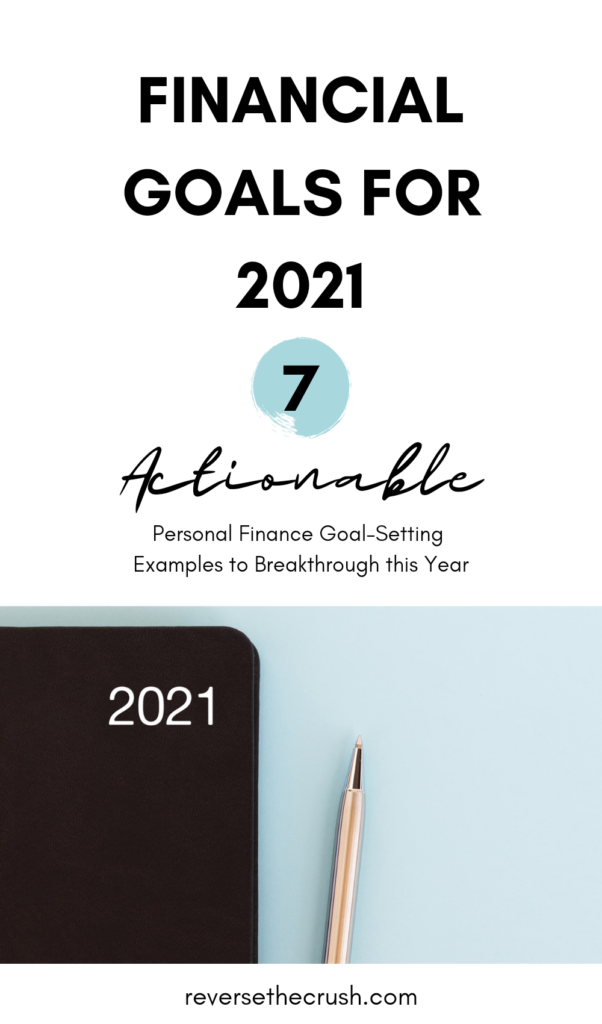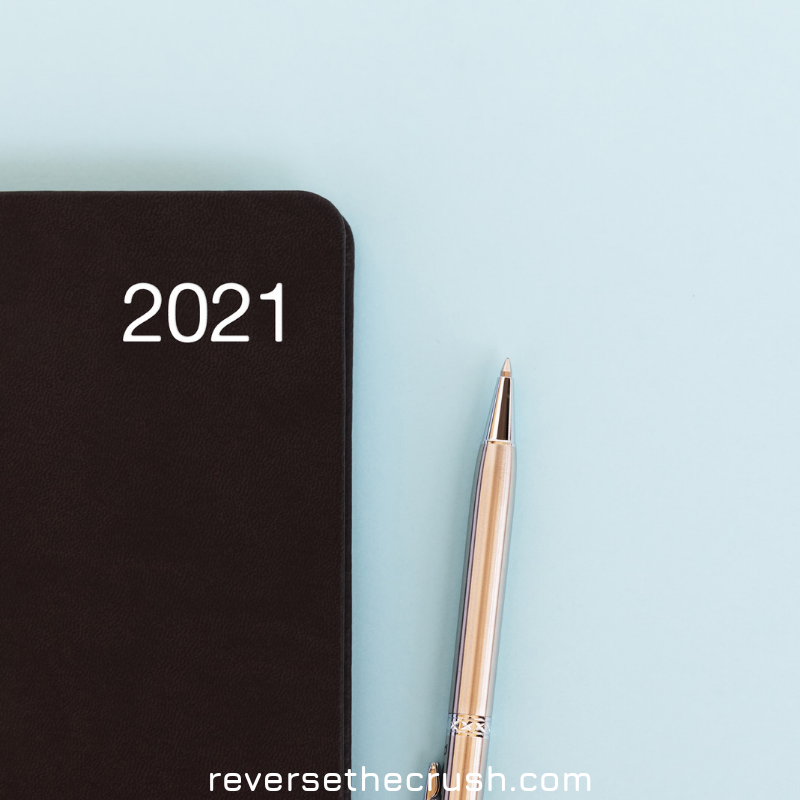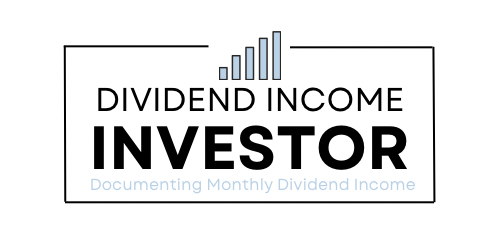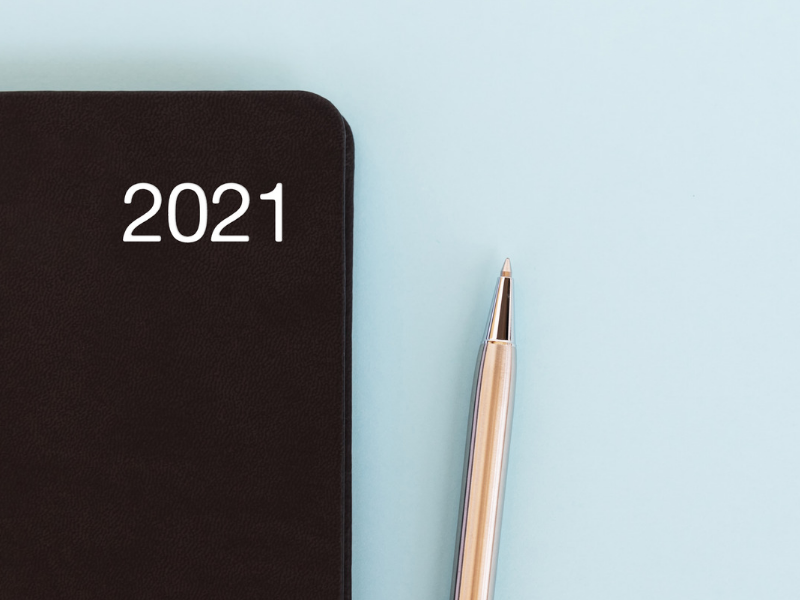Financial goals for 2021: Financial goals are actionable objectives you achieve within a period of time. 7 Examples of goals to set + my own financial goals.
According to Money Sense, Canadian households collectively owe $1.75 per every dollar of disposable income they have as of the first three months of 2020.
Fortunately, we’re about to put 2020 behind us and begin thinking about the opportunities that lie ahead in 2021.
There are plenty of reasons to be motivated about a wealthier 2021.
In this post, I will look at actionable, achievable financial goal-setting examples for 2021 to be better off financially.
Let’s dive in with an overview of financial goals.
“The secret of getting ahead is getting started. The secret to getting started is breaking your complex overwhelming tasks into small manageable tasks and then starting on the first one.” – Mark Twain
Financial Goals for 2021:

What are Financial Goals and Why You Should Set Them This Year
Financial goals are actionable objectives that you want to achieve within a specific period of time.
Financial goals are important because they break down long-term goals into achievable steps.
For example, reaching a net worth of $1,000,000 seems overwhelming to accomplish all at once. But if you break it down into actionable steps over a 20 to 25 year period, it’s easy.
On top of that, according to a study by Gail Matthews at Dominican University, writing your goals down makes it more likely that you will accomplish them.
Examples of Good Financial Goals to Set
If you’re just starting out and looking for a framework, these goals are for you.
These examples are for people with debt, financial hardship, or just for those who are interested in learning how to properly manage their finances.
Frankly, financial success is really quite simple. The main challenge is that it requires discipline.
So, my approach has always been to make it as simple as possible.
Here are a few examples of good financial goals to set for the year:
Financial Goals for 2021 to Set

1. Create and stick to a Budget
Before you begin to set your financial goals for 2021, you must assess your financial situation to understand what to prioritize.
To begin, learn how to set up a budget to manage your income and expenses.
Start by determining your monthly and annual income expectations for the year.
Based on how much you earn, you can create the framework for managing your money.
Of course, the key is the ability to be consistent with a balanced plan you won’t fail at.
If you have as much debt as the average Canadian does, you should prioritize paying off debt. In that scenario, savings should be minimal.
Otherwise, your financial goals for 2021 should be aligned with your short and long-term goals.
So, if you want to reach financial independence or early retirement, saving and investing is what you need to prioritize. You will need to save at least 15% minimum.
Whatever your situation or goals are, though, the key is to be consistent and stick to a reasonable budget.
When you are creating your budget, consider and factor in the following:
- Your Income.
- Cost of Food.
- Housing cost.
- Transportation expenses.
- Any utilities.
- Cost of internet or mobile phone.
- Debts.
- Savings.
- Taxes.
- Larger expenses.
- Short and long-term financial goals.
2. Pay Yourself First (Ideally 10% of Your Income)
Even though I believe paying off debt should be prioritized, I still believe that you should pay yourself first.
Ideally, you should automatically save 10% of each pay check and pretend it doesn’t exist.
Obviously, not everyone is that fortunate. But if you are, you should be taking advantage of the opportunity.
Paying yourself first is a surefire way to easily save money and become wealthy over time.
The rate that you pay yourself should be based on your income, debt, and your long-term financial goals.
3. Prioritize Paying Off Debt
Debt is truly awful, it will hold you back. Debt is demoralizing as it takes away opportunities.
The sooner you pay it off, the better your cash flow will be and the easier it will be to save. I’m still working on paying off student loan debt.
If you have debt, put as much of your disposable income as possible towards paying it off.
If you find yourself in a more dire financial situation, you will need to look at what debts you need to pay off first. Dave Ramsey prefers the debt snowball method. I tend to agree with that approach unless we’re talking about credit card debt or other high interest rate debt.
Simply put, create a plan to pay off your debt and stick to it. Make small sacrifices now to make your life easier down the road.
Related Post: Saving vs Debt Payoff – Should You Save or Pay Off Debt?
4. Prepare for Taxes (especially CERB)
After such a strange year, a lot of people are left wondering what tax season is going to look like.
I mean, some people were forced to live on CERB in Canada. I keep hearing about the stimulus payments over in the U.S. on Twitter.
If you received any monetary support, it’s time to start thinking about what that will mean for your financial situation.
Essentially, make sure to include taxes in your budget and financial plan. Talk to an accountant or professional tax specialist.
Alternatively, if you do your own taxes online, you could always do a mock run of your taxes to get an idea.
5. Put Part of Your Savings in an Emergency Fund
I think a lot of us learned we needed to be more prepared in 2020, myself included.
The truth is that anything can happen.
And unfortunately, many people were left without jobs in 2020.
It’s a harsh reminder to prepare for emergencies.
After last year’s events, safety and risk management should be the cornerstones of every financial plan.
So, put a percentage of the money you pay yourself first into an emergency account. I use a high interest savings account.
6. Invest the Rest of Your Savings
If you only focus on short-term goals, you will never get anywhere in the long-term.
Ideally, your short-term financial plan should fit in with your long-term plan.
Each year is like another step in the process to what you ultimately want your finances to look like.
After putting aside money for emergencies, you should invest the rest of your savings.
Personally, I invest in dividend growth stocks.
With zero commission brokerages, it’s never been easier to invest in stocks and ETFs.
Alternatively, you could invest in real estate or your own business.
Typically, it’s smart to invest in what you know best.
In short, invest the money that you pay yourself into an investment you understand.
If you are not comfortable choosing an investment, talk to a professional advisor.
7. Cut-Out Unnecessary Expenses
It’s not always about making more money. Ladder climbing the corporate world is not for everyone. Also, there’s more to life.
Sometimes it’s about eliminating expenses to gain more time.
If your expenses are lower, you can work less because you don’t need to earn as much money.
Of course, quality of life matters. I would never condone cutting out what brings you value.
But if you have a home phone and a cell phone, get rid of your home phone.
If you have cable TV, replace it with Netflix.
Cut-out unnecessary subscriptions, they add up.
Your cash flow increases by cutting out unnecessary expenses, so it becomes easier to save money and pay off debt.

My Personal Financial Goals for 2021
Now for my personal financial goals for 2021.
Each year I set financial goals to move closer to financial independence.
I have been doing this on the blog since 2017.
If you read last year’s goals, you would know the theme for 2020 was balance. At the time, I had just started a part-time job so my income was less predictable.
Well, I still work part-time now so my income is still less predictable. But I have a better idea of how many hours I will work and how much I will make.
Since everyone’s financial situation is unique, I wanted to share my own personal financial goals for 2021.
For background information, I work a high paying part-time job and work on this blog part-time. My long term goal is to reach financial independence through blogging and dividend investing.
Based on my current situation and goals, here are my financial goals for 2021:
Being rich is having money; being wealthy is having time. – Margaret Bonnano
Build a Slush Fund
I don’t have a salaried position, so my income fluctuates.
I earn my income through a part-time job, by blogging, and from dividend investing.
So, during times when I’m getting less hours at my part-time job, I need a slush fund to make the difference.
A slush fund is different than an emergency fund because it is intended to be spent.
To build a slush fund, I plan to save chunks of money when my hours are up in the spring. Even a slush fund of $1,000 should suffice.
Save at least $3,000 from Part-Time Job
My savings goal for the year is $3,000. It’s based on how much I saved during my first year as a part-time worker.
I know this sounds like a small amount of money to save for someone who is chasing financial independence.
But remember that I work a part-time job to have more time now. On average, I work 15 to 20 hours per week.
I’m pursuing slow FI, but I’m investing and building income streams along the way.
Anyways, I plan to invest this $3,000 into dividend growth stocks.
I will accomplish this goal by paying myself first when my hours are up. From there, it will be transferred into one of my brokerage accounts.
Pay off My Student Loan by April at the latest
Unfortunately, I failed my goal to completely pay off my student loan debt in 2020.
But I almost paid it off. There’s only around $900 left now.
Based on my payment schedule, it will be paid off by April at the very latest.
This could be a game changer because it will add $240 per month to my income.
Earn $750 in Dividends
The dividend business generated $621.28 in 2020 on just over 10% growth in 2020.
Based on the same rate of growth, I will receive at least $683.41 in dividends.
However, since the portfolio is already expected to generate more than that, and since 2020 was a slow year for growth, I am setting the target at $750.
Frankly, it’s still a modest target.
I need to be earning $1,000 per year in dividend income as soon as possible.
Related post: Dividend Income December 2020 – A Record Final Month
Grow Forward Dividend Income to $891.84
By the end of 2021, my goal is to grow the dividend business to $891.84 in forward dividend income.
There are a few key catalysts that will drive growth in 2021:
- Reduced commission fees.
- DRIP.
- Blog income.
- Reinvesting dividends.
To get to $891.84, I need to buy enough stocks to generate an additional $209.
To generate the extra $209, I will invest $3,000 from working. At a yield of 4%, I will add $120 annually.
In addition, I will add another $28 or so annually by reinvesting approximately $700 worth of dividend income. Approximately $13.36 of that growth will come from a DRIP stock. And dividend raises should add $20 or more annually. Plus, an extra $6 by reducing commission fees.
Meanwhile, blog income is expected to add another $25 after expenses.
Altogether, it adds up to $891.84 worth of dividend income annually by the end of next year.
Reduce Commission Fees by Half
I reduced commission fees in 2020 by $39.85.
Of course, my commission fees are not very high to begin with, since I am a buy and hold investor.
But even a small amount of fees will add up over time. Check out this article by Dividend Growth Investor about Why Keeping Investment fees low matters.
To reduce commission costs in 2021, I will be managing my accounts differently.
I recently opened a TFSA with WealthSimple because they offer zero commission trading.
So, from now on, all of my Canadian stocks will be held there. I am still debating on whether or not to transfer over the rest of my TFSA. It is hard to justify spending money on fees when I don’t have to.

Financial Goals for 2021 – Final Thoughts
After reading this post, hopefully you feel more prepared to set your own financial goals for 2021.
Now you have the framework for basic financial goal-setting, and you saw how financial goals can be adjusted to suit different financial situations.
In conclusion, financial goals are actionable objectives that you want to achieve within a specific period of time.
Setting financial goals is important because it breaks long-term goals down into steps. Moreover, writing your goals down is proven way to dramatically enhance your chances to actually accomplish your goals.
As a review, here are 7 examples of financial goals for 2021:
- Create and stick to a budget.
- Pay yourself first.
- Prioritize paying off debt.
- Prepare for taxes (CERB).
- Put part of your savings into an emergency fund.
- Invest the rest of your savings.
- Cut-out unnecessary expenses.
I also set my own personal financial goals for 2021:
- Build a slush fund.
- Save $3,000 from part-time job for investing.
- Pay off student loan by April.
- Earn $750 in dividends.
- Grow forward dividend income to $891.84.
- Reduce commission fees in half.
I hope these goal-setting examples help you improve your financial situation in 2021.
Related Content
A Financial Conundrum – Financial Goals for 2020
Refining the Plan as Business Ramps Up – Financial Goals for 2018
I am not a licensed investment or tax adviser. All opinions are my own. This post may contain advertisements by Monumetric. This post may also contain internal links, affiliate links to BizBudding, Amazon, Bluehost, and Questrade, links to trusted external sites, and links to RTC social media accounts.
Connect with RTC
Twitter: @Reversethecrush
Pinterest: @reversethecrushblog
Instagram: @reversethecrush_
Facebook: @reversethecrushblog
Email: graham@reversethecrush.com


 Dividend Income December 2020 – A Record Final Month
Dividend Income December 2020 – A Record Final Month
